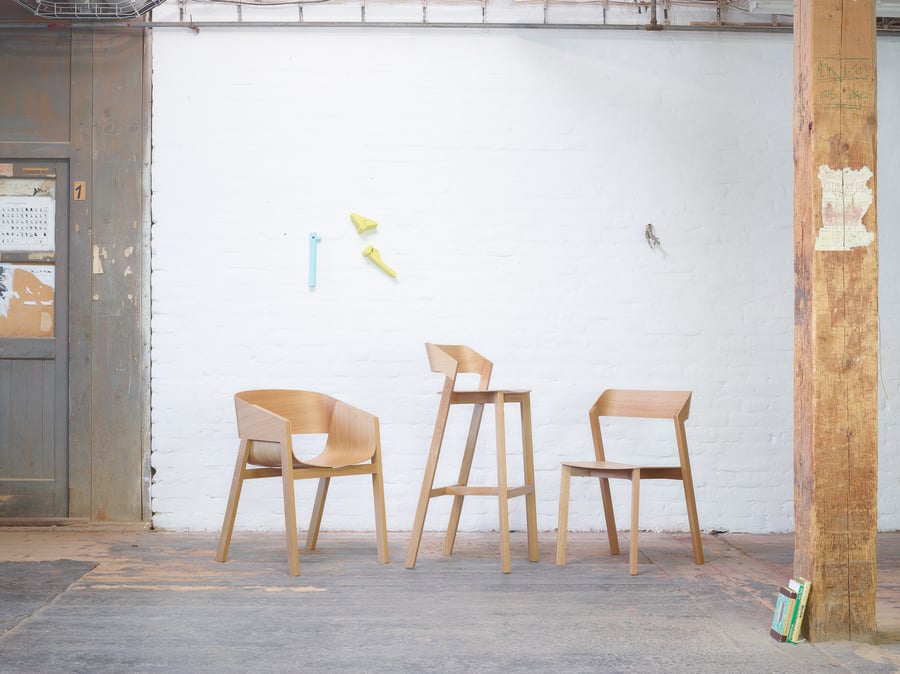

%20copy.webp)
Following in his father’s footsteps, Alexander Gufler initially began his creative career as a jewellery maker. Over time, however, his hands have breathed life into much bigger objects, many of which today adorn countless public and private spaces.
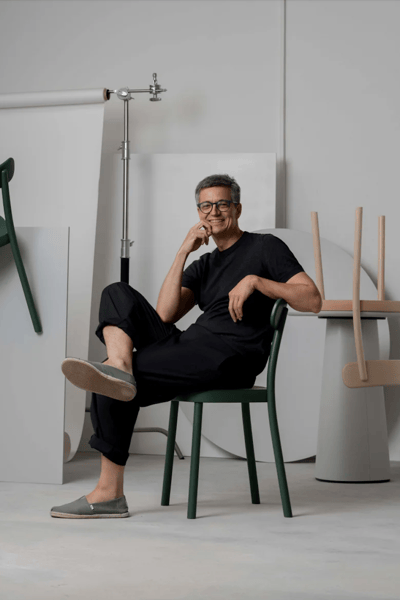
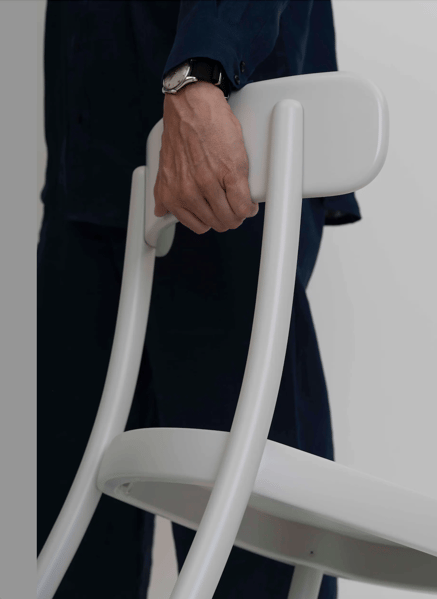
Specialising in original bentwood chairs for the home & workplace, here is TON's interview with Alexander Gufler:
One of the best known is undoubtedly the Merano armchair, introduced to the world ten years ago. However, most recently the La Zitta Chair by TON.
International designer, Alexander Gufler speaks below about his iconic chair and shares his views on design, prototypes, materials and the future.
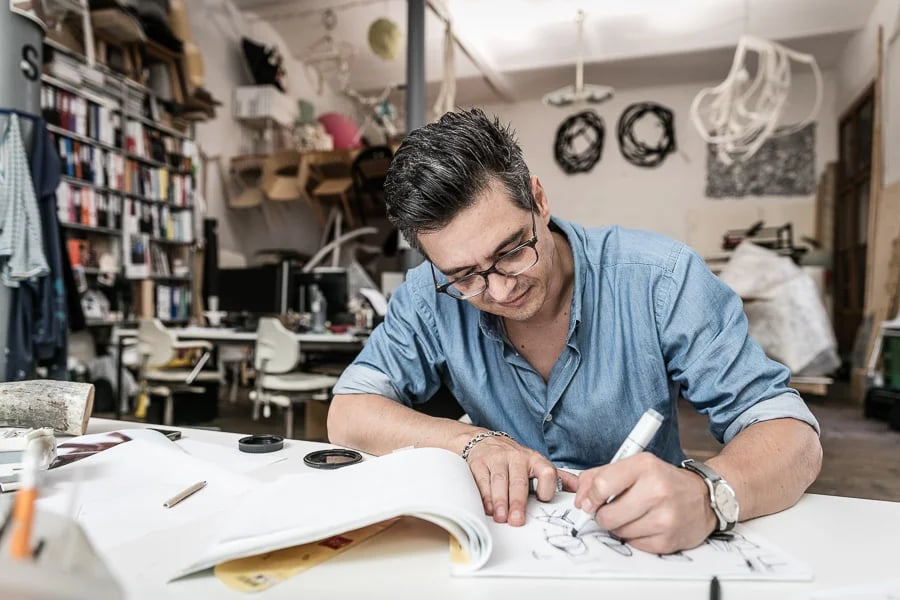
When did you decide that being a jewellery maker was ultimately not your calling?
I worked in jewellery for five years, and then decided to formally study the craft in the German city of Pforzheim. Next to the department for jewellery studies was the department for product design, and I loved going to their exhibitions. They worked with various computer programs, and the field was more technical overall, and this appealed to me. The more I learnt about design, the more I was convinced that I had to try it.
Did you draw inspiration from your surroundings or from famous iconic designs?
I remember that while still studying in Pforzheim, I fell in love with Vitra’s Panton chair. For one day each week people in Pforzheim are allowed to put things they no longer want out on the street, and you often find real treasures among other people’s discarded belongings. For me it was a white Panton chair. Although the one I found was broken, that chair was the beginning of my love affair with furniture, particularly with chairs.
Do you have it at home?
Not that one, but soon after that I bought a Panton chair that I still have. Another iconic piece that followed was a lemon juicer made by Philippe Starck.
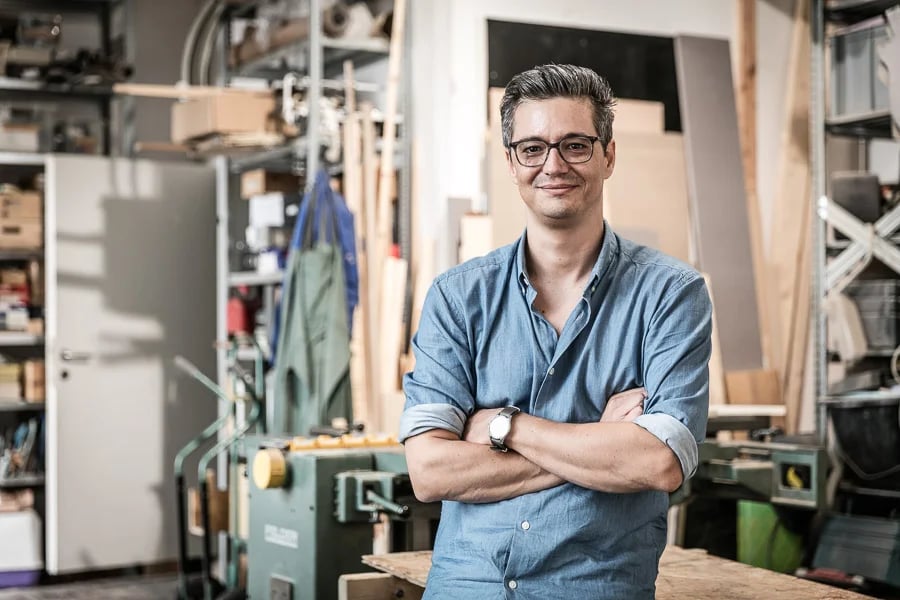
Did these design classics influence your visually clean, simple style?
I think I was mostly influenced by the craft itself and by the actual process of making prototypes. If you want to make something with your own hands, you can’t make it too complicated. This idea is key for staying true to clean, simple design. Computer programs make it possible to create beautiful details, but these may not be feasible in the making process, especially when you are aiming for something that will succeed in production. This is where you need to consider other factors, such as production possibilities, pricing and so on.
Was Merano your most challenging prototype?
Actually it was one of the easiest. The most challenging was probably a wooden chair I made for my final project at the university. I created the entire chair on a computer and became immediately aware that it would require a lot of CNC machining. In the end I realised that wood is a natural material that does not always follow prescribed rules. Everything seems possible on a computer, but reality is different. This experience helped me understand the important role that simplicity plays in the overall design process. And that’s how Merano was born.
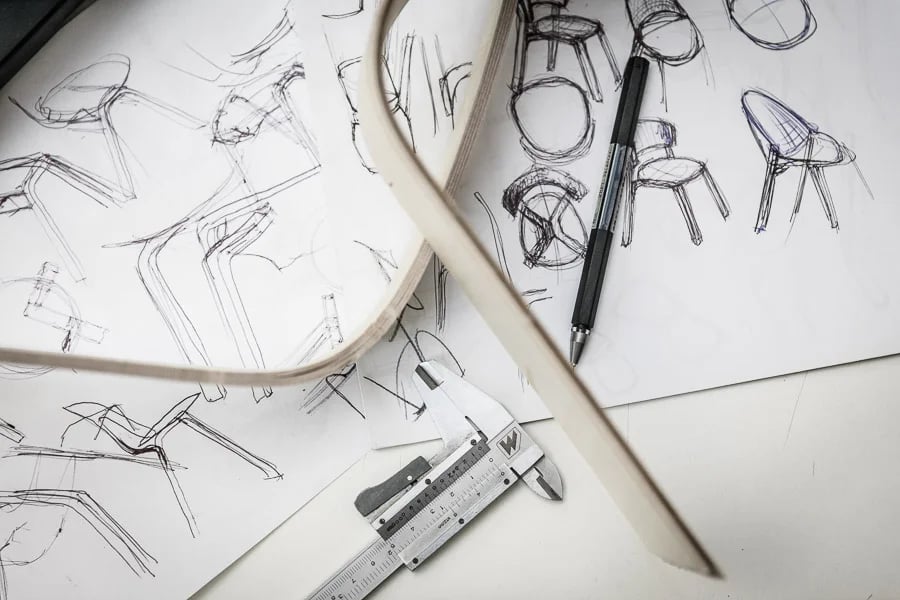
How did Merano find its way into TON’s portfolio?
I unveiled the armchair at the IMM trade fair in a category for small-scale designers. Tom Kelley, TON’s Art Director at the time, really liked the design, as did the company’s Production Manager and the General Director. I believe it was the prototype that got the three of them excited about the armchair, as it helped them imagine concrete production steps and all relevant details.
Are there any products that you have designed for which you have not made a prototype?
No, there are none.

How many prototypes have you made then?
So far about 50. I haven’t kept them all, as I don’t have the space to store them. My philosophy is that a designer can’t go to a company without a perfect prototype. If I can’t make it from the actual material, like plastic for example, then I make it at least from cardboard. A cardboard prototype can be made in a day or a day and a half, and it can reveal a number of issues that a company would otherwise have to resolve later.
Do all designers use this approach?
I think the good ones make their own prototypes. Especially when we are talking about furniture. When I was finishing my studies, I realised that although there were many excellent designers among my peers, some of them printed their prototypes. They knew the ins and outs of 3D programs, and printed beautiful 3D prototypes, but they lacked an understanding of materials. When you actually work with a material, you learn how it behaves and this helps you to perfect your product.

Which material do you work with most often? Wood?
Yes, mostly with wood, which is partly influenced by my connection to TON. Besides this though, wood is for me the most natural of materials. To work with wood you need just basic tools. For example, I made Merano in my little workshop. If we started to talk about metal or steel, we’d have to consider much bigger equipment.
But I assume that working with wood is more time-intensive. Is that right?
If you compare it with plastic, for example, then yes. You can’t make a prototype from plastic; the nearest you can get to it is through a 3D print. But even that is not a real representation of the product, only something that has the right proportions and aesthetics. When a company decides to include a product made of plastic in its portfolio, it has to carefully examine every single detail and invest heavily into tooling. But the resulting product becomes inexpensive, because a manufacturer can produce large volumes at minimal cost.
That’s probably why plastic is the material of our times. Will it also be in the future?
That’s hard to say. Maybe in a recycled version. I’m sure that someone will develop a new type of plastic that will retain the simplicity of plastic production while addressing current environmental concerns. Sooner or later this new approach will become a standard. But this won’t signal the end of wood. Quite the opposite – the organic, earthy nature of wood will ensure its on-going popularity. It is after all a material that grows on our planet, and deep down everyone likes to be surrounded by natural products.
TON's product offering is defined by the iconic bentwood chair, yet through remarkable partnerships with global designers such as Alexander Gufler, they have crafted a diverse selection of modern and traditional designs, maintaining their brand integrity throughout.
